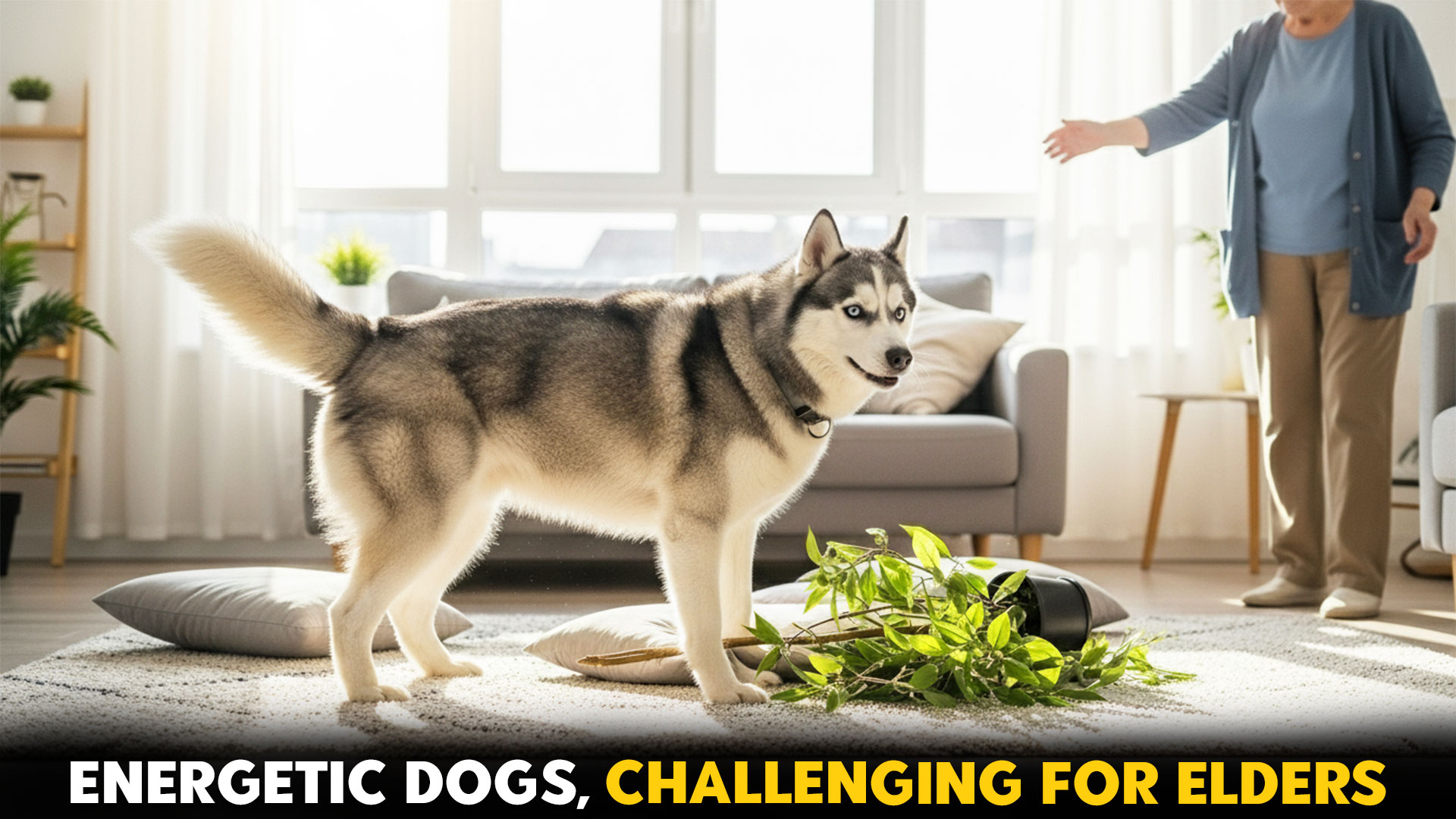While pets offer immense benefits, finding the right breed is crucial. An ideal dog for an older adult should be manageable in terms of exercise, strength, and general care, allowing for a comfortable and joyful partnership.
However, the best dog breeds, though wonderful companions in the right environment, can present unique challenges for seniors. These challenges often stem from extreme physical demands, such as energy levels requiring extensive daily activity, or significant physical strength that could lead to difficulties on walks or accidental falls.
This guide explores the worst dog breeds that seniors might consider avoiding. By understanding the specific reasons—whether it’s intensive grooming needs, separation anxiety issues, or sheer size and power—you can make an informed choice that ensures both your well-being and the happiness of your future furry friend.
Prominent Dog Breeds to Avoid for Seniors
Choosing a dog is an exciting decision, especially for seniors seeking companionship and a sense of purpose.
1. German Shepherd
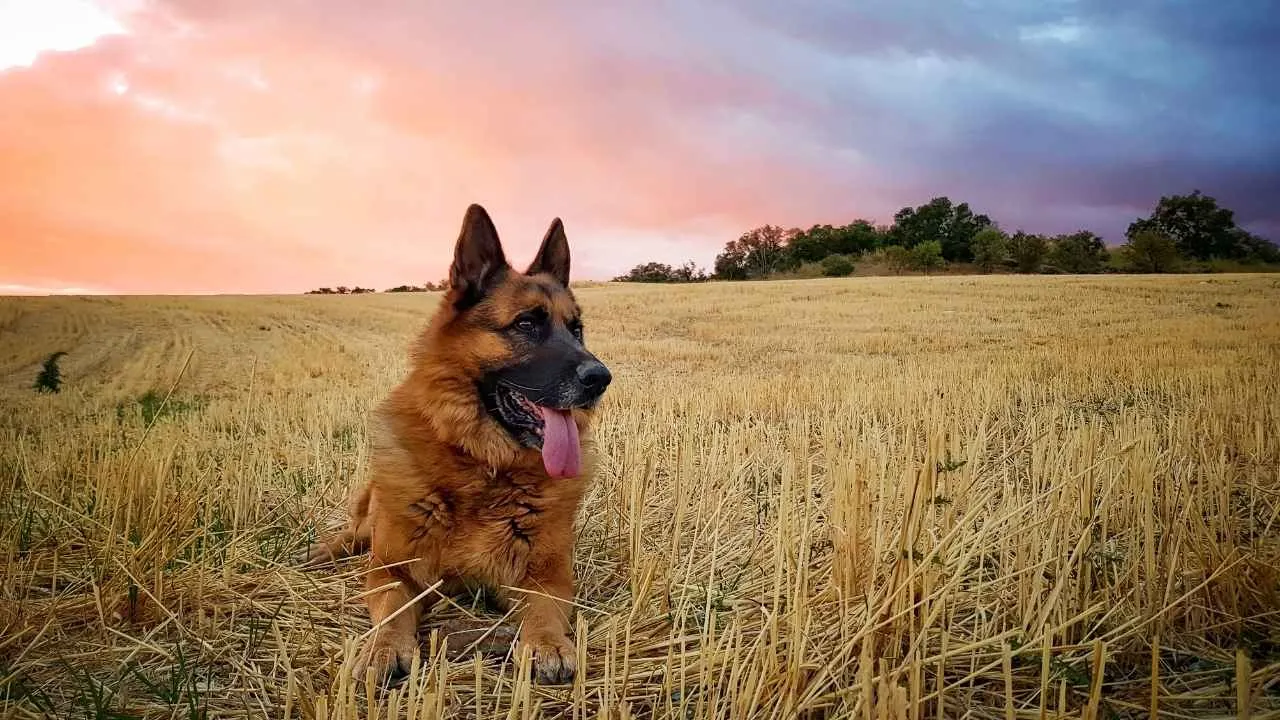
The Loyal Protector with High Demands
Originally bred for herding and protection, the German Shepherd is a large, agile, and smart dog breed that combines nobility with a strong work ethic. Their physical prowess is matched by an inner resolve, making them both steadfast family pets and vigilant guardians.
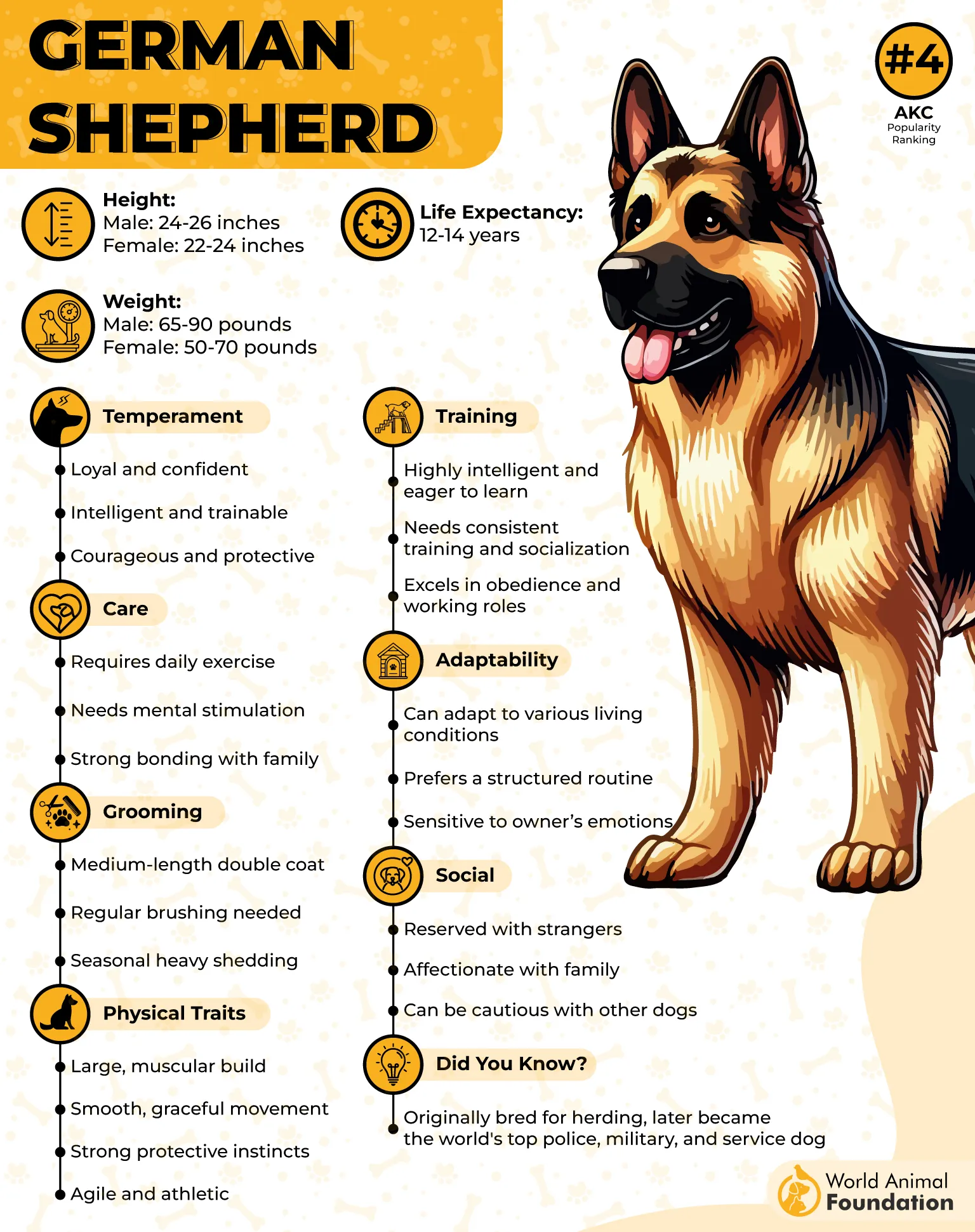
History & Temperament
The German Shepherd’s origins trace back to 1899, when Captain Max von Stephanitz saw a herding dog whose intelligence and physicality sparked the creation of the breed, as per PDSA.
Their courageous, confident, and protective nature makes them exceptional companions—but they can be aloof with strangers.
Why Seniors Should Consider Other Breeds
High Energy Requirements: German Shepherds need regular exercise and mental stimulation, which may be difficult for seniors to manage.
Size and Strength: They’re large dogs with a muscular frame, and their strength can be overwhelming, especially during walks or in tight spaces.
Training Challenges: While highly trainable, they need a firm hand to prevent dominance issues, which might be a challenge for less experienced pet owners.
Protective Instincts: Their natural guarding nature can sometimes lead to aggression, requiring careful handling and socialization.
2. Siberian Husky
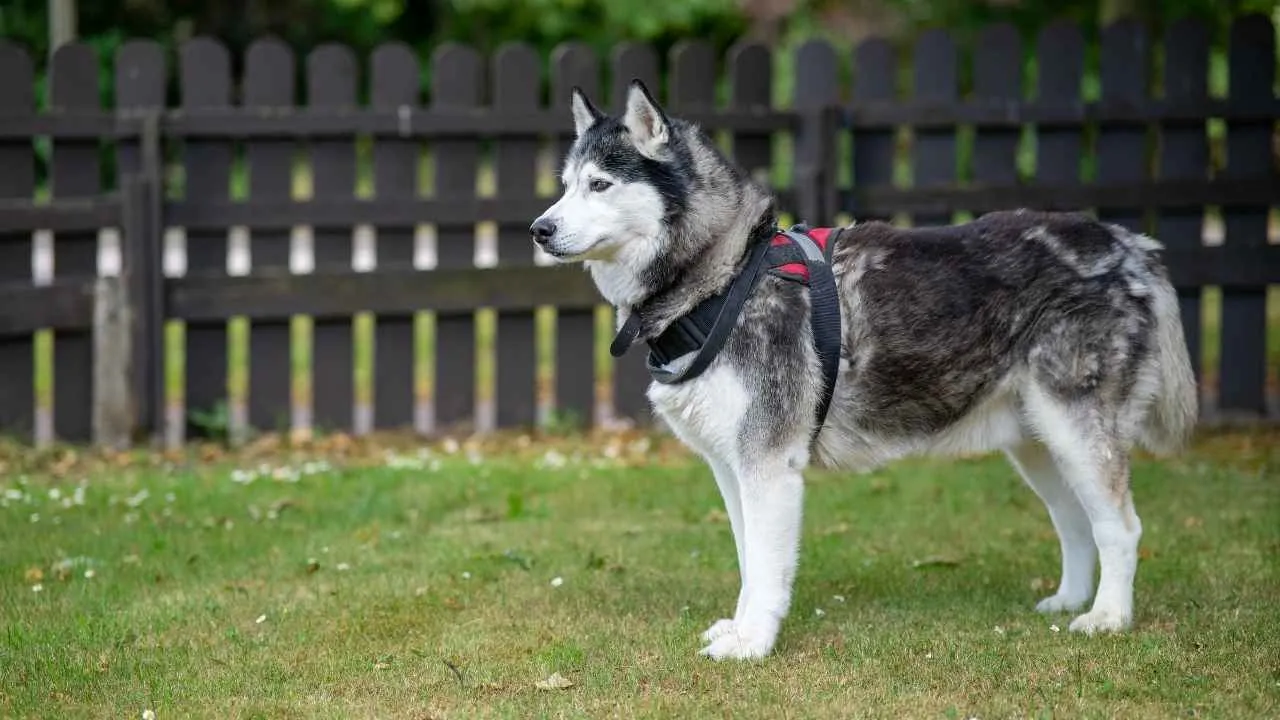
A Spirited Adventurer with a Need for Space
The Siberian Husky is a high-energy breed that was originally developed by the Chukchi people of Siberia over 3,000 years ago for sledding and endurance.
Brought to the U.S. in the early 1900s, this breed quickly became popular due to its striking appearance and friendly demeanor, according to the AKC.
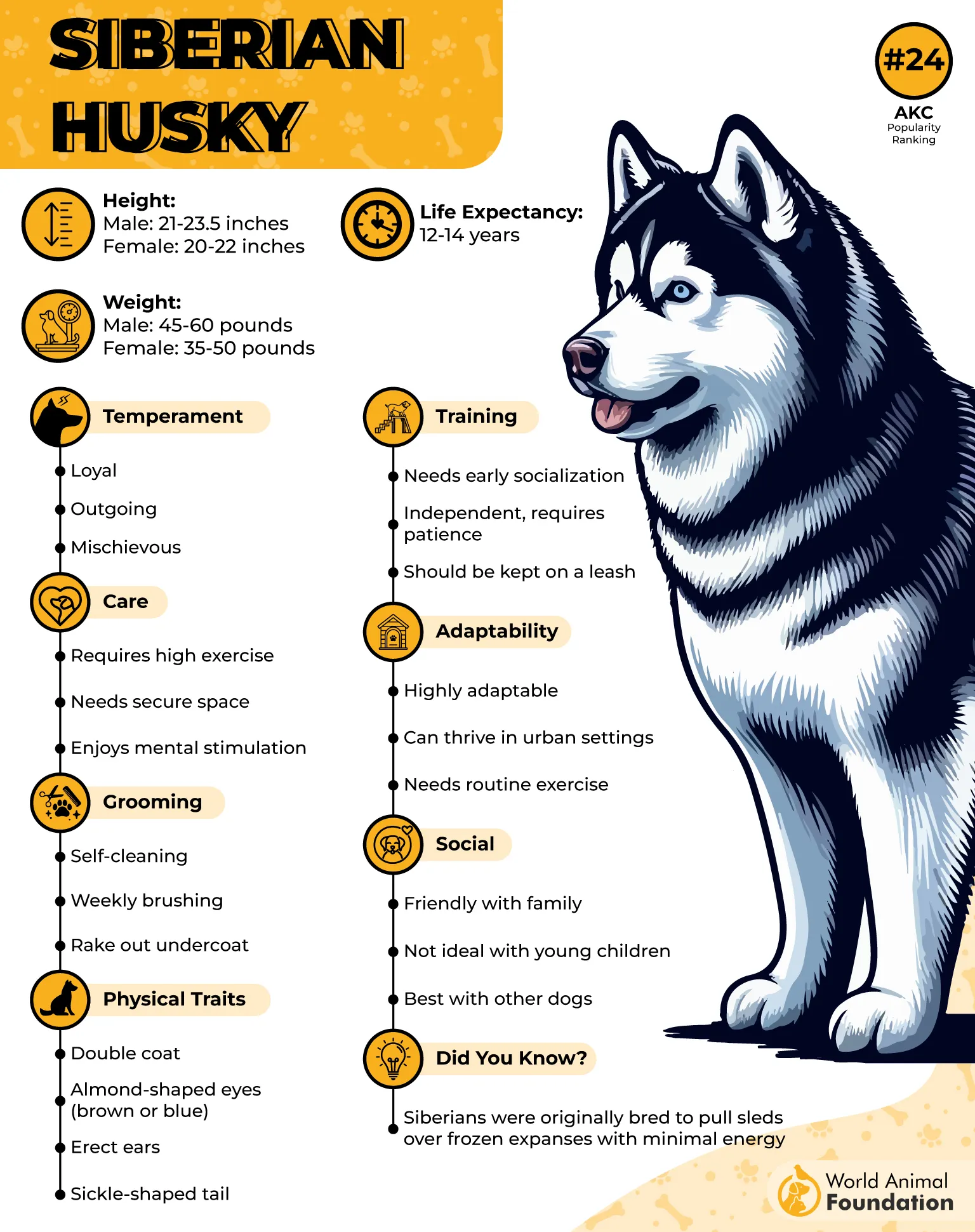
The Siberian Husky’s Past & Personality
Huskies were bred to run long distances in harsh conditions, which is why they’re so spirited and need constant mental and physical stimulation. They are outgoing and social but also known for being independent and strong-willed, which makes training them a challenge.
While they are generally good with kids and other pets, their love for freedom can lead to destructive behaviors when left alone or bored.
Why Seniors Might Want to Skip the Siberian Husky
High Activity Needs: Siberian Huskies require lots of space and exercise, making them difficult to care for in smaller or less active environments.
Vocal Tendencies: Their love of howling and barking can be a nuisance, especially in quieter living spaces or close-knit neighborhoods.
Training Difficulties: Huskies are of an independent nature and often stubborn, which can make training them more challenging for senior owners who may need more patience.
Escape Artists: Huskies have a strong instinct to run and can escape from yards or homes if not securely contained.
3. Rottweiler
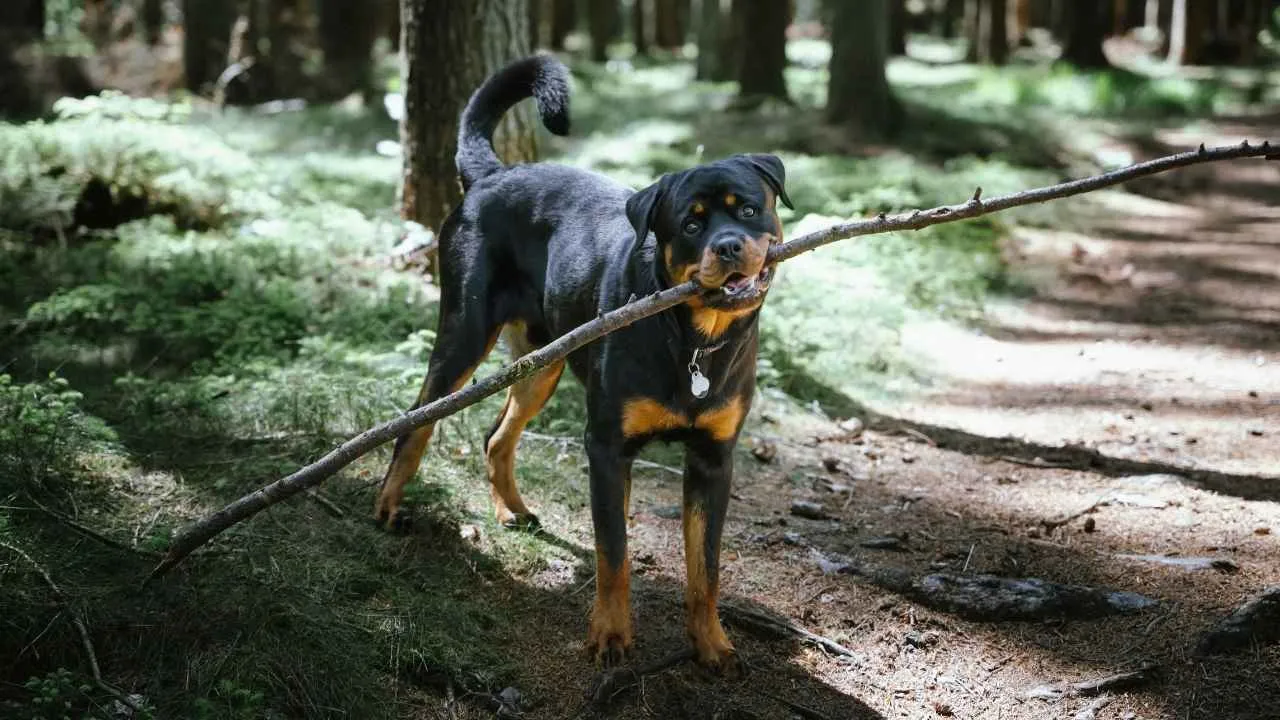
The Loyal and Powerful Protector
Rottweilers are large, intelligent dogs originally bred for herding and guarding livestock during the Roman Empire. Known for their loyalty and protective nature, they make strong, dependable companions for experienced dog owners.
Rottweiler Origins & Temperament
Dating back to the Roman Empire, Rottweilers were bred to guard cattle and protect their owners, a trait they still carry today.
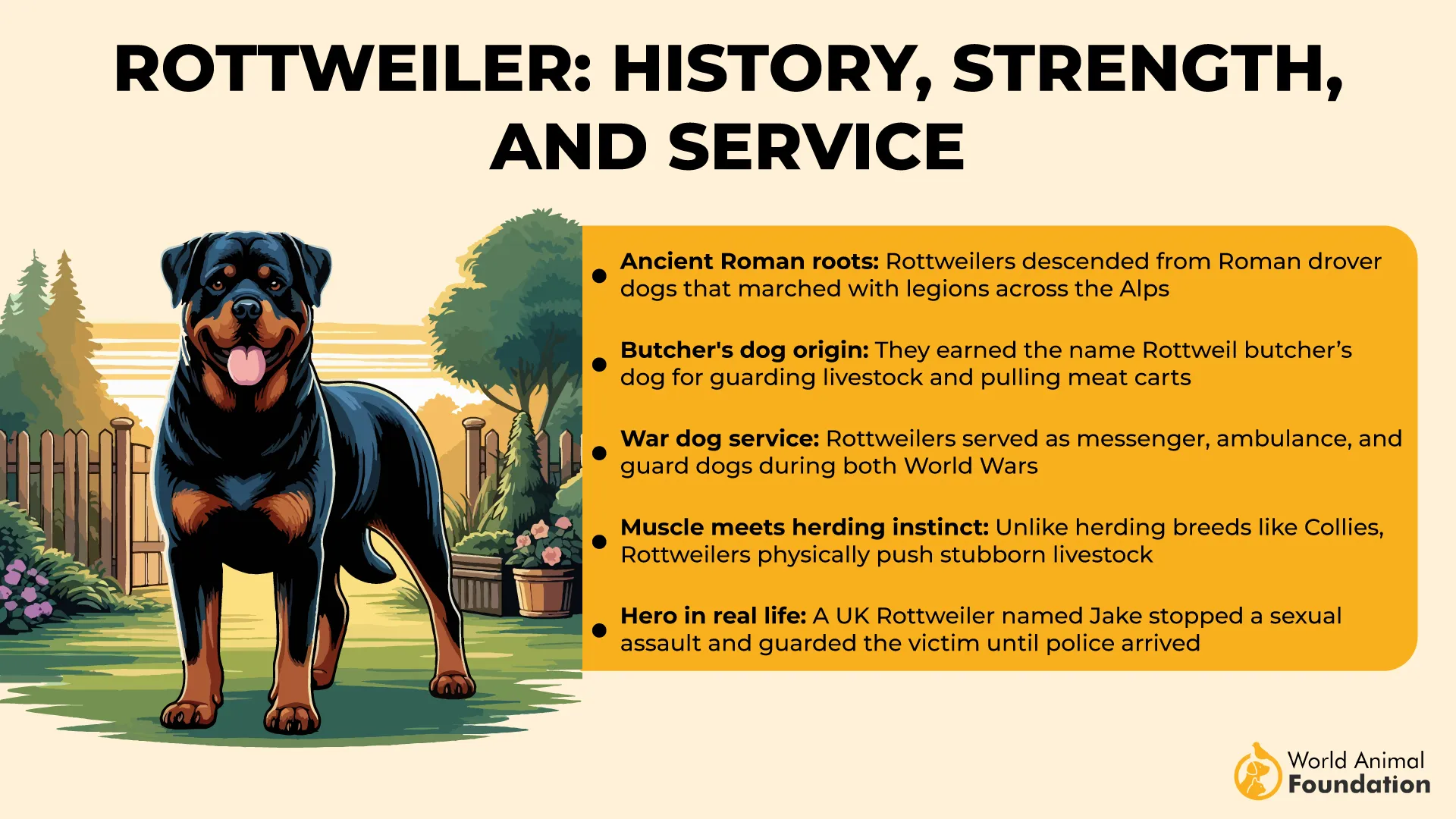
Despite their imposing size, they are calm, quiet dogs that can make great family pets, provided they receive early socialization and consistent, positive reinforcement training.
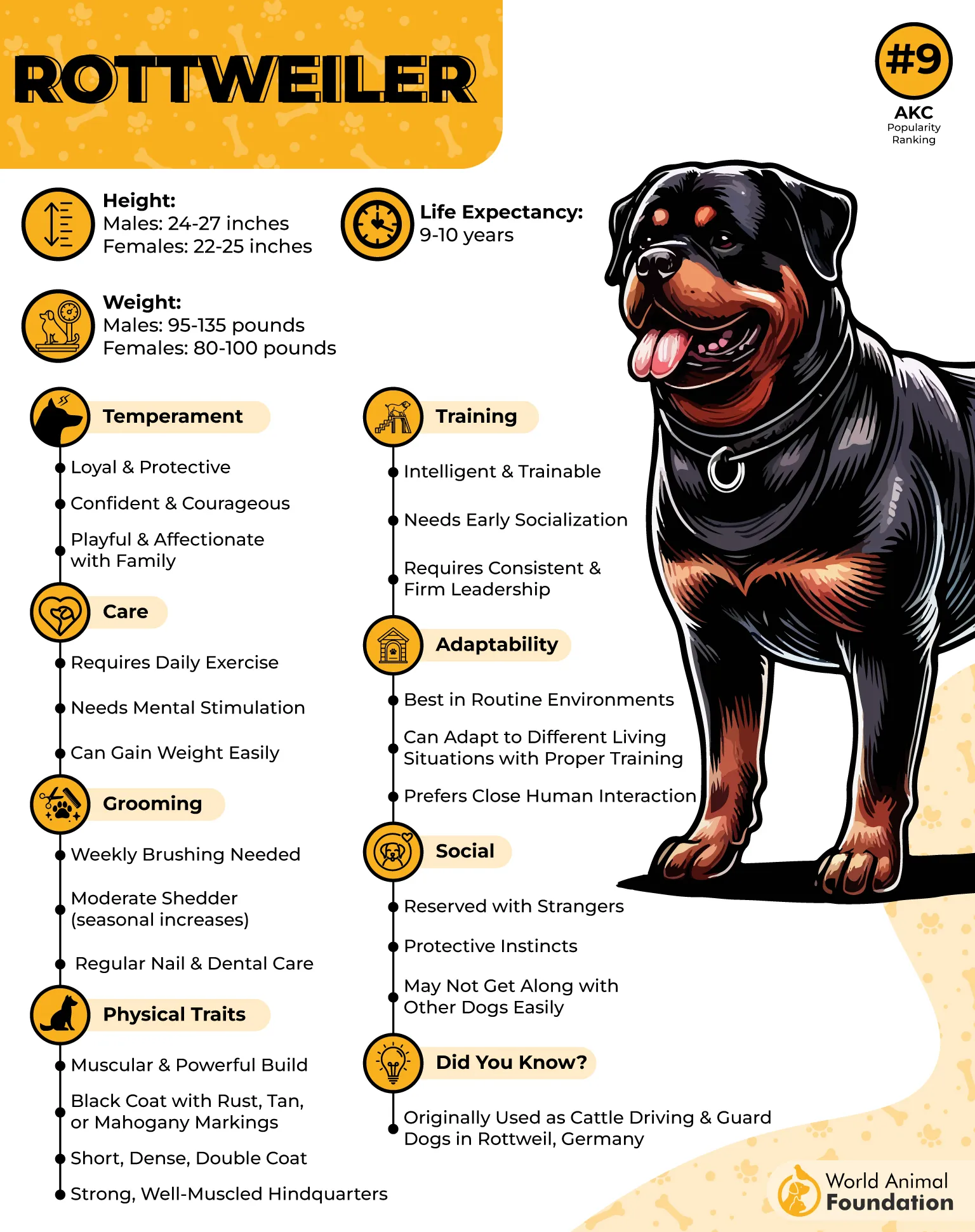
Why Rottweilers Might Not Be Ideal for Seniors
Powerful Build: Rottweilers are large dogs breed and strong, which can make them difficult to control, especially for seniors with limited strength or mobility.
Need for Socialization: Without proper early socialization, Rottweilers may develop protective or aggressive behaviors, requiring an experienced hand to manage them.
Training Demands: Rottweilers need consistent and positive training to avoid behavioral problems, which can be challenging for seniors without previous dog training experience.
Drooling & Allergies: Rottweilers tend to drool heavily, and their saliva can trigger allergies, which may be uncomfortable or problematic for some seniors.
4. Dalmatian
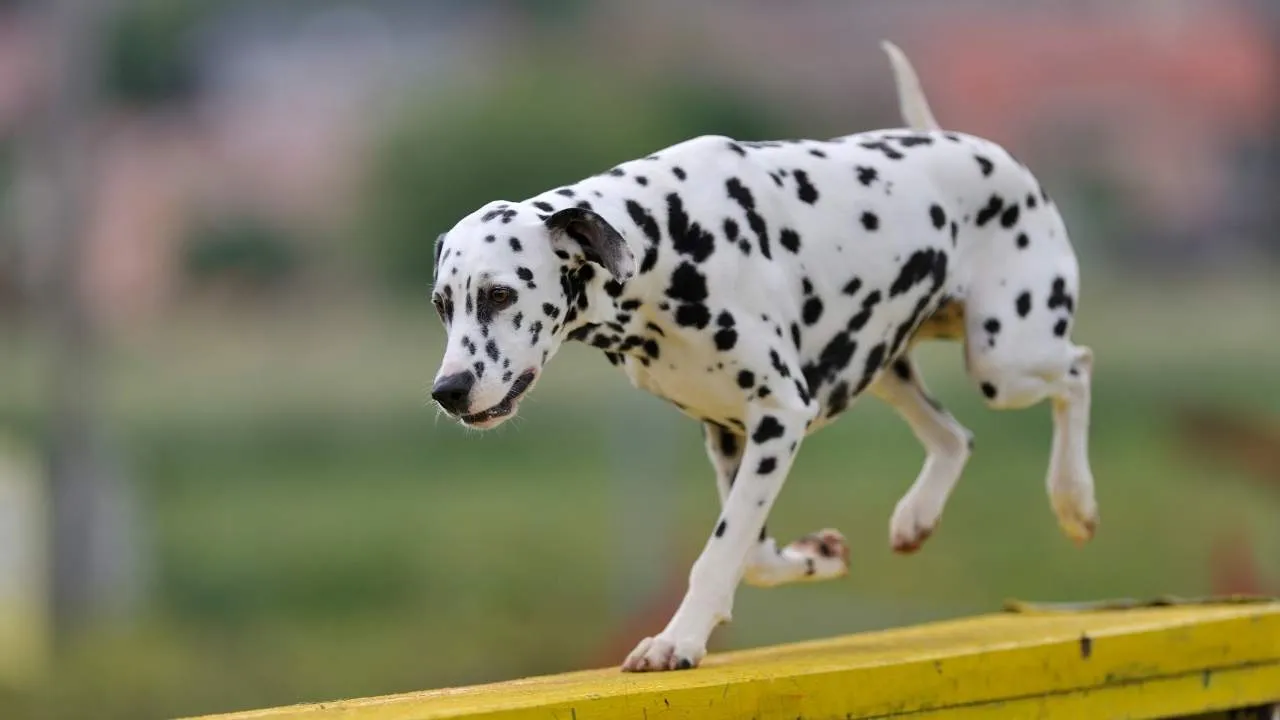
The Energetic Spotted Companion
With their distinctive coat of black or liver spots, Dalmatians have long captured the public’s imagination, especially as the firehouse mascot or stars of “101 Dalmatians.” Originally bred to guard horse-drawn carriages, these dogs are known for their elegance, stamina, and intelligence.
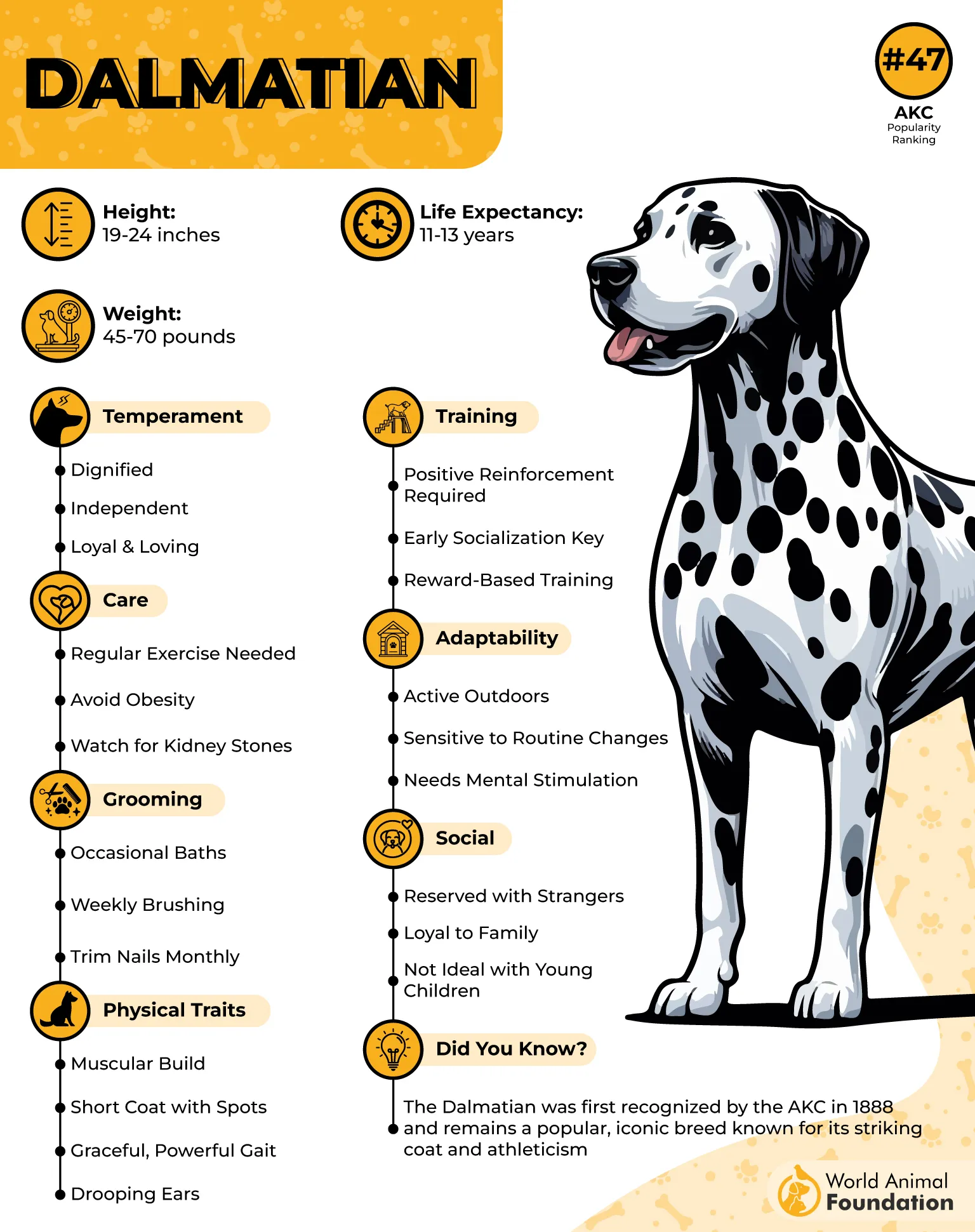
Dalmatian History & Personality
Named after the coastal region of Dalmatia, Dalmatians have a varied history, from protecting horses and carriages to serving as firehouse dogs, as per PetMD.
While they are playful and affectionate with family, they require early socialization to prevent aggression or anxiety around other animals.
Why Dalmatians Might Not Be Suitable for Seniors
High Energy Levels: Dalmatians are extremely active and need regular exercise, making them a poor fit for seniors who may not be able to keep up with their physical needs.
Socialization Needs: Without proper socialization, Dalmatians can become reserved or aggressive toward other dogs or strangers, which can be challenging for seniors to manage.
Vocal & Destructive Tendencies: Dalmatians can be loud, and when left alone for too long, they may become destructive, requiring owners who can spend significant time with them.
Specialized Care: Dalmatians are prone to deafness and may need special care or attention, which could be difficult for seniors without the resources to address these issues.
5. Border Collie
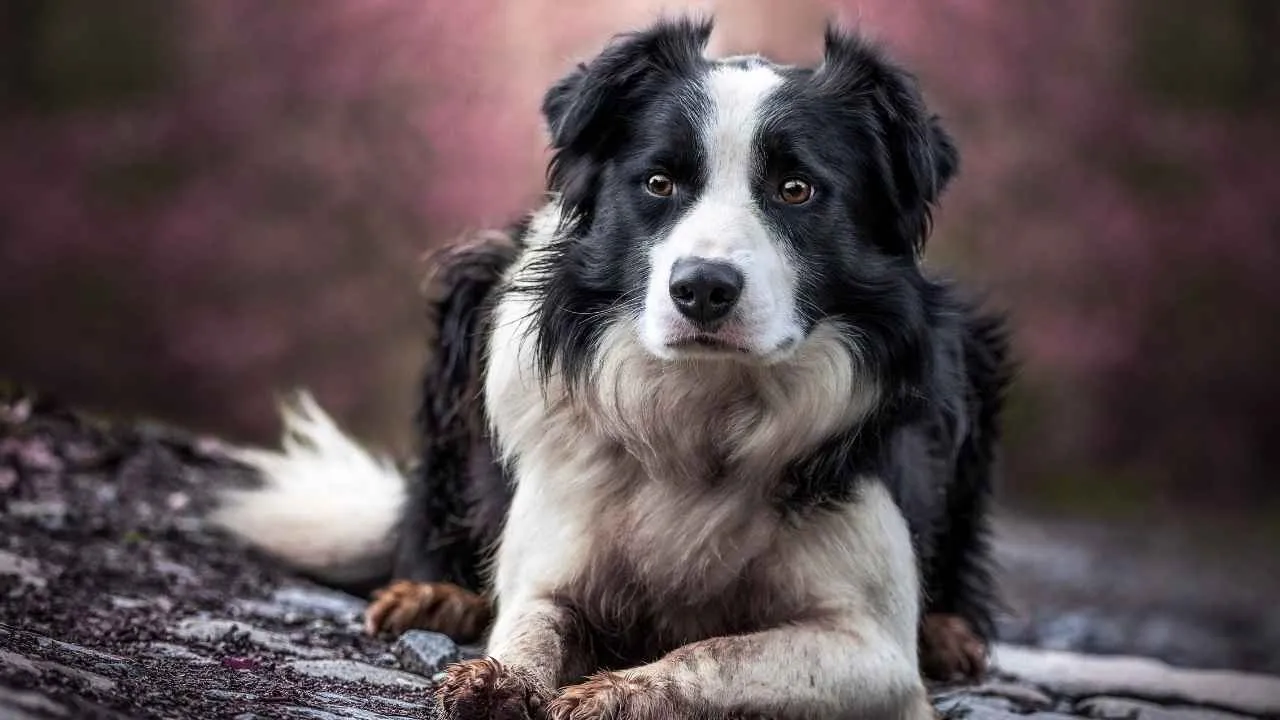
The High-Energy Genius
Known as the world’s smartest dog, they were originally bred to herd livestock in Great Britain. Their incredible intelligence and boundless energy make them exceptional working dogs, but these same traits can also make them a challenge in a home setting.
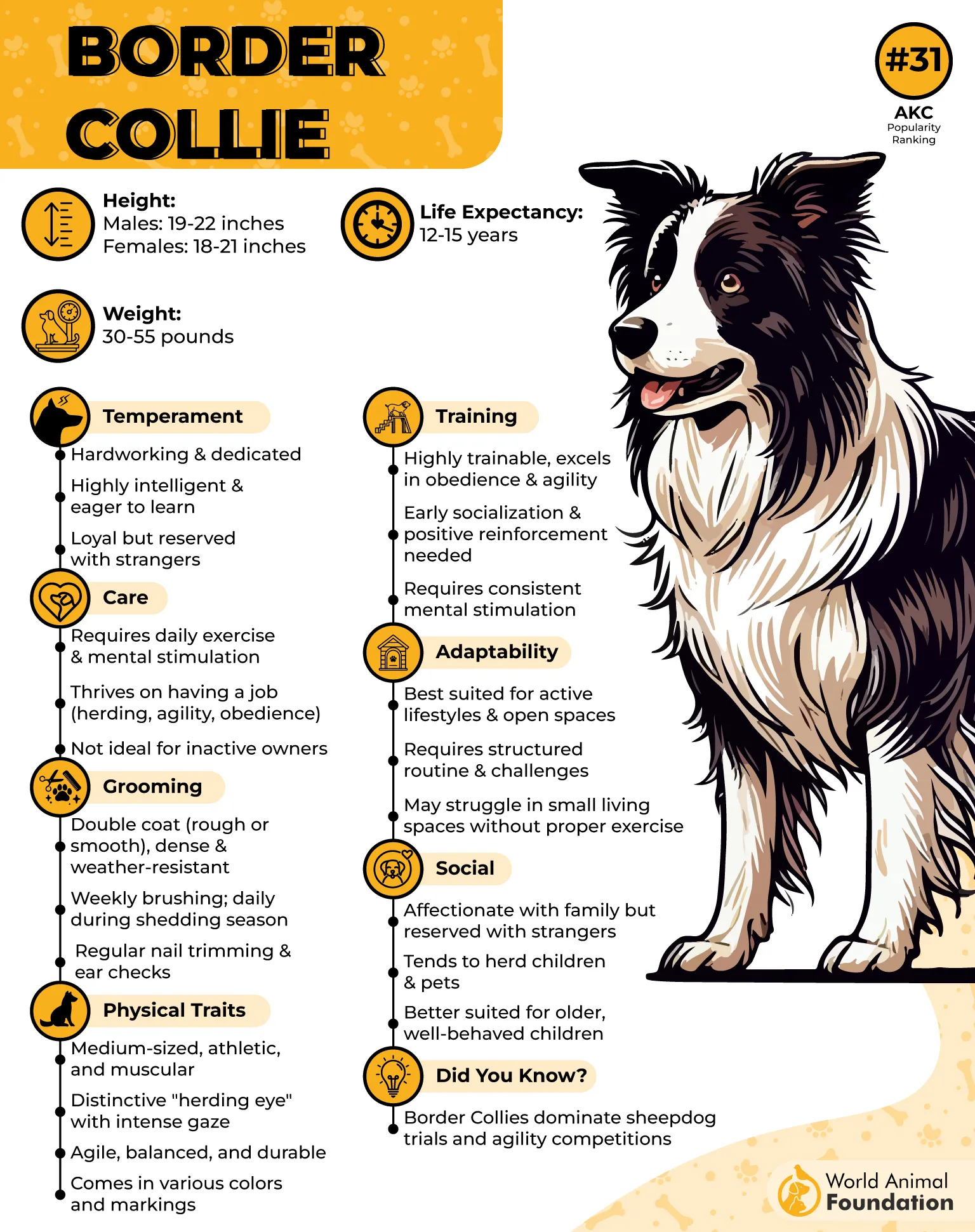
Border Collie Origins & Nature
Originally bred for herding, highly energetic, medium-sized dogs that thrive on mental and physical challenges. Their agility, sharpness, and stamina make them ideal companions for activities like hiking, agility competitions, or even frisbee games.
Why Border Collies Might Not Be the Best Fit for Seniors
High Energy Demands: They require at least 1-2 hours of exercise daily, which may be too much for seniors with mobility limitations.
Intense Mental Attention: These dogs are incredibly smart and need constant engagement. Without it, they can become anxious, destructive, or even attempt to herd other pets or children.
Training Needs: Border Collies need consistent obedience training and mental tasks, which can be challenging for seniors who may not have the time or energy for such activities.
Not Ideal for Small Spaces: Due to their high activity levels, they may not be suited for apartment living or homes without a fenced yard where they can run and play freely.
6. Akita
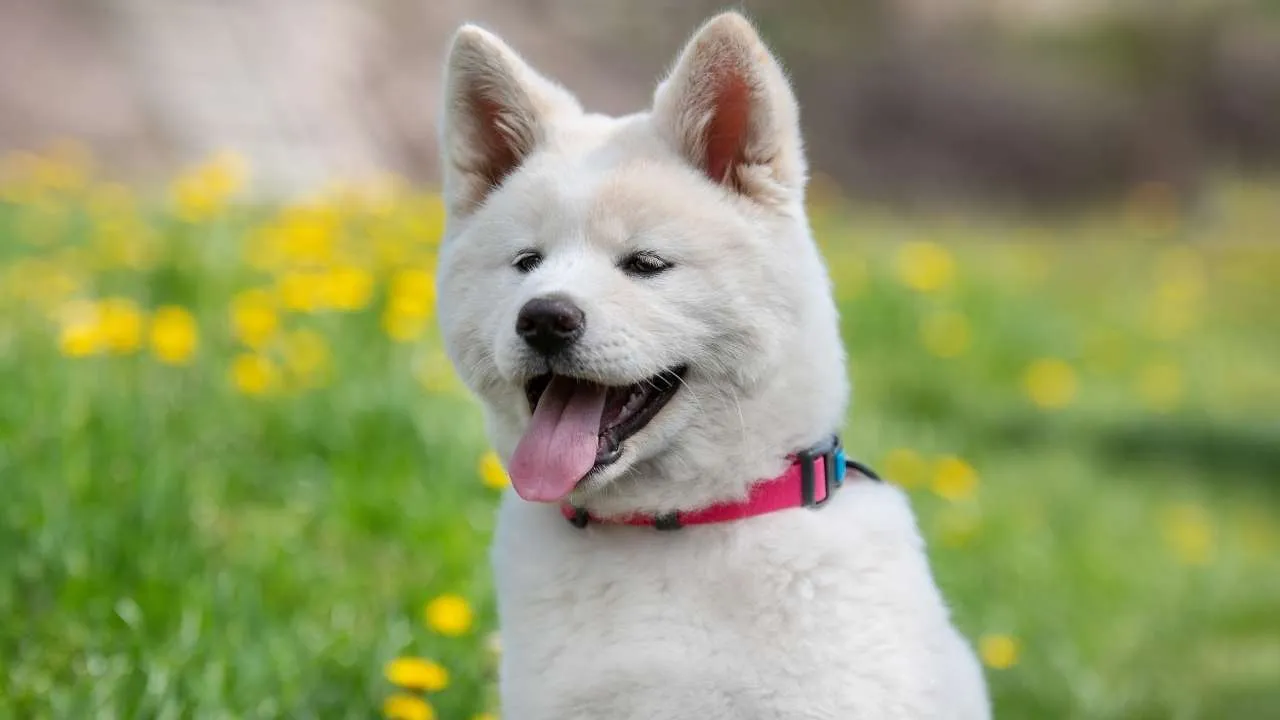
The Silent Guardian
Akitas are courageous and dignified dogs, bred for guarding and protection. With their calm and reserved nature, they’re not the type to be overly social or exuberant, but their loyalty and protective instincts make them excellent companions for families who need a reliable guardian.
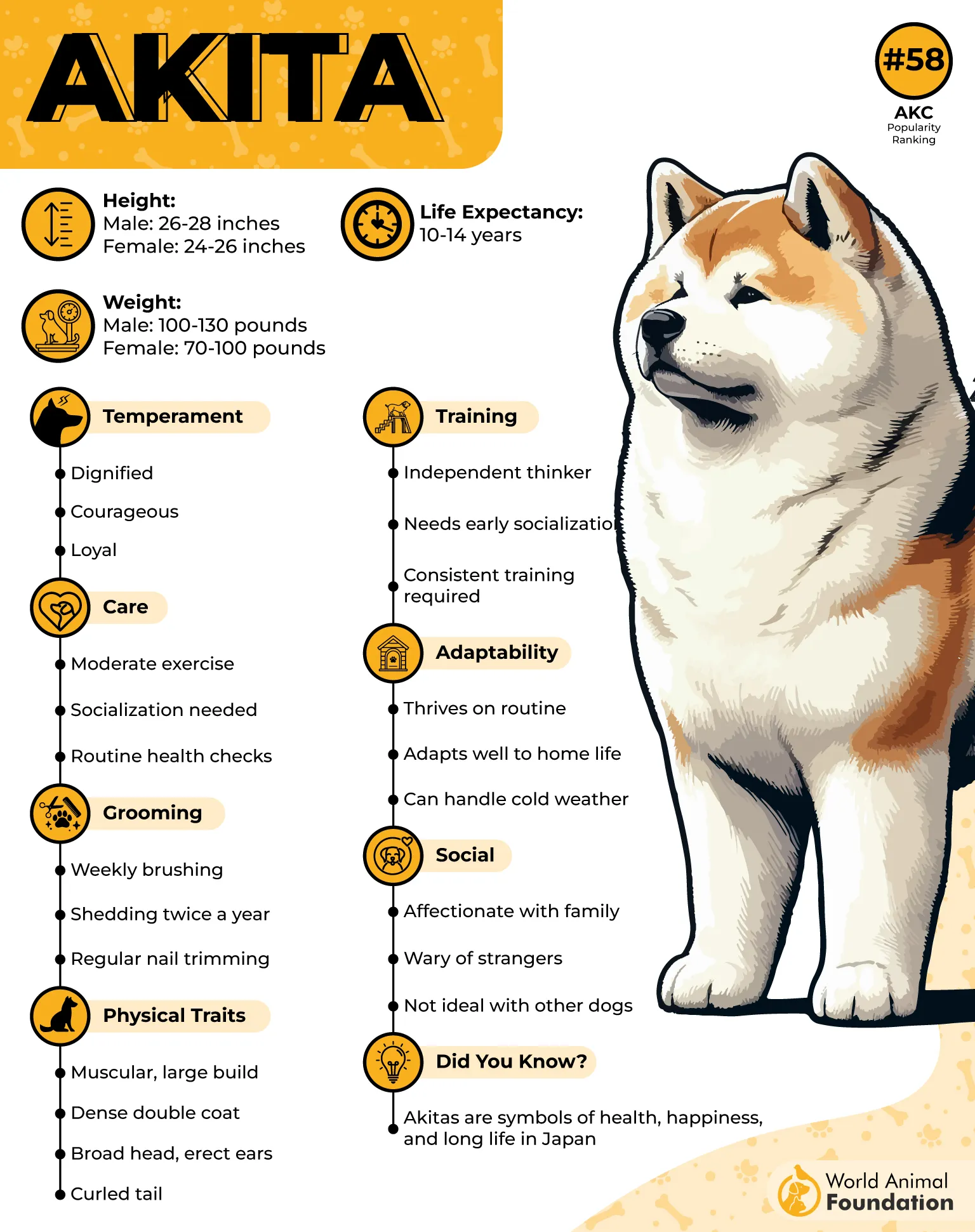
Akita Personality & Heritage
Originating from Japan, Akitas were originally bred as a hunting dog and for protection, as per Britannica. Their stoic demeanor, independence, and sharp instincts made them revered by noble families.
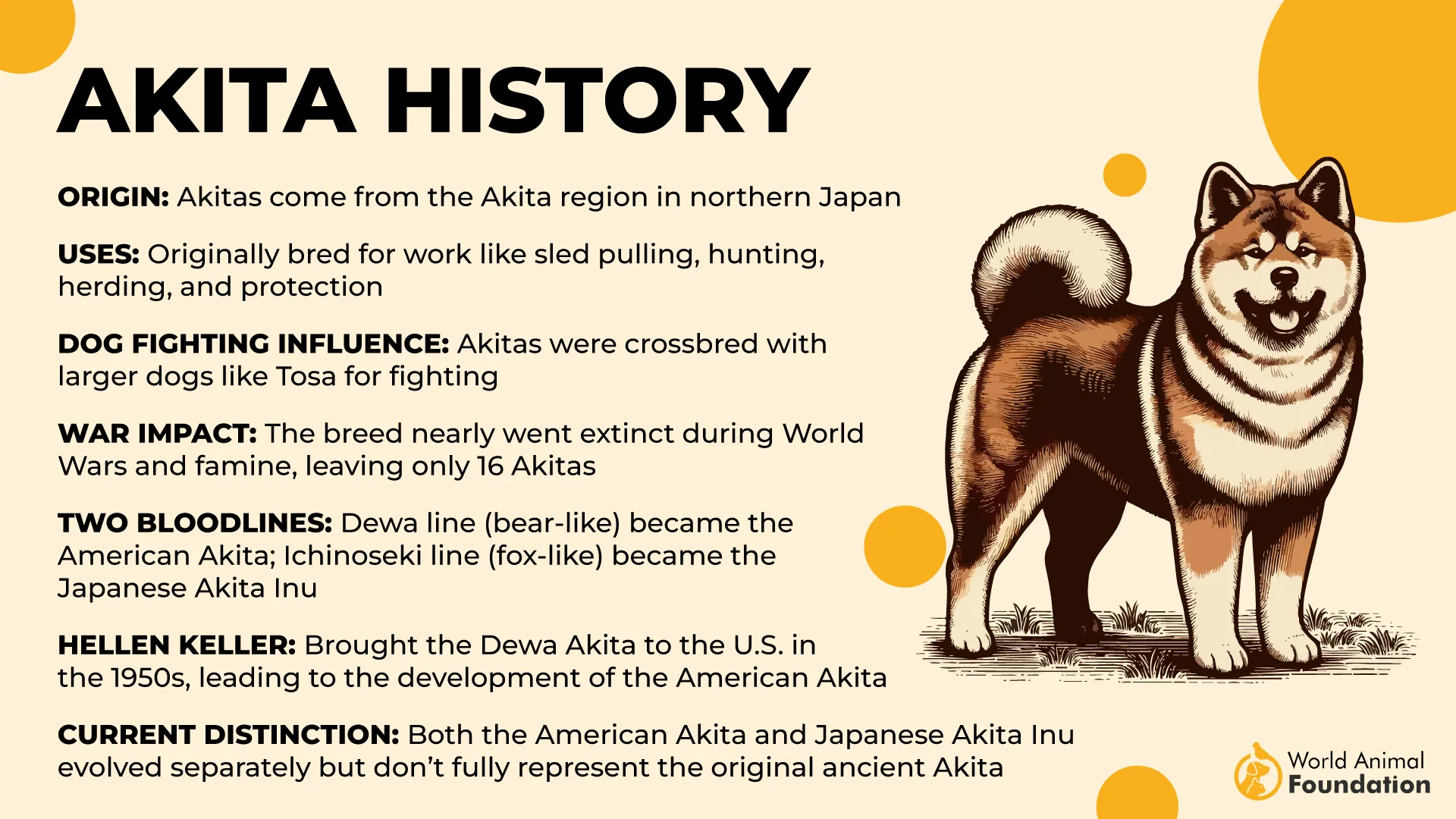
While they are a strong dog breed and confident, Akitas are more comfortable with their immediate family and are often wary of strangers.
Why Akitas May Be the Worst Dog Breed for Seniors
Protective Nature: Akitas are extremely loyal but can be overly protective, especially toward strangers or other pets, which can make them difficult for seniors to manage.
Stubborn Temperament: Seniors may find it challenging to assert consistent authority with a breed that tends to think for itself.
Minimal Exercise Requirements: While they don’t require intense exercise, Akitas still need regular walks and mental practices, which might be difficult for seniors with mobility issues.
Not Ideal for Multi-Dog Homes: Akitas can be intolerant of other animals, particularly those of the same sex, making them less suitable for households with multiple pets.
7. Doberman Pinscher
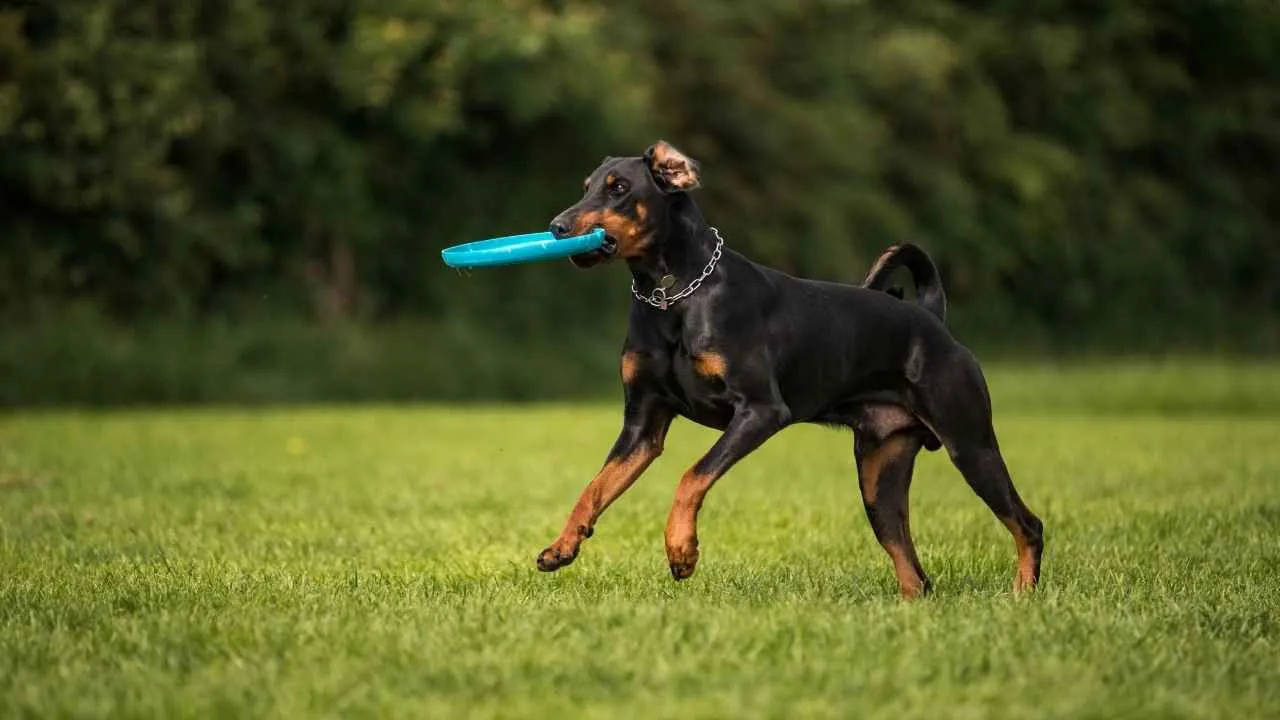
The Intelligent Protector
Doberman Pinschers are known for their intelligence, loyalty, and playful nature. Despite their often intimidating appearance, they’re affectionate companions when properly trained and socialized from a young age.
Their reputation for aggression is often overstated, and with the right guidance, they make loving and devoted family pets.
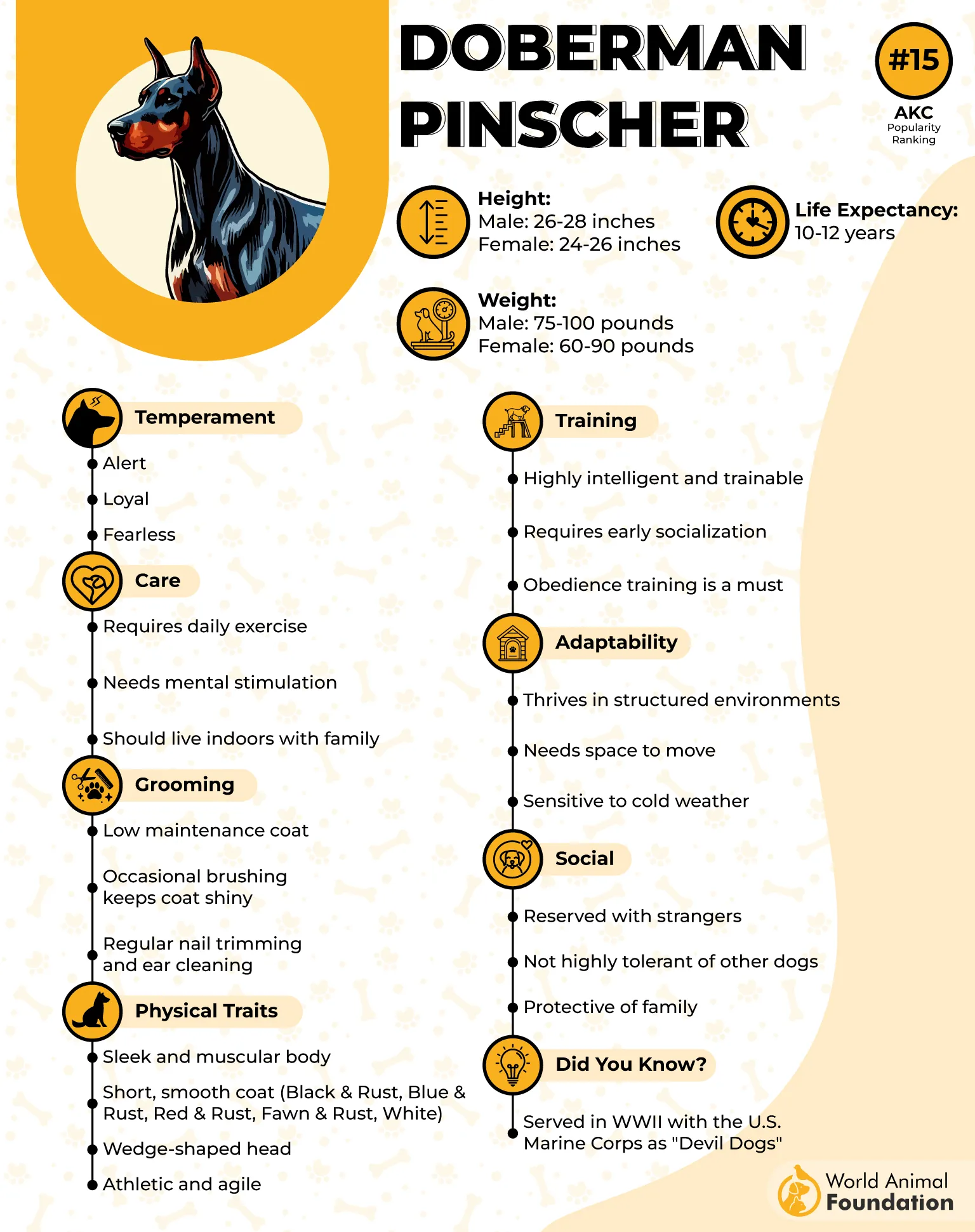
The Doberman’s Energetic Personality
Originally bred in Germany by Louis Dobermann, Dobermans were developed as protectors for tax collectors and have since earned a reputation as top-notch working dogs, as per Purina.
Their high intelligence and energy levels make them excellent companions for active families or individuals.
Why Dobermans May Not Be a Suitable Dog Breed for Seniors
High Energy and Exercise Needs: Dobermans are an active breed that requires daily physical and mental stimulation. Their high energy might be overwhelming for seniors with mobility issues.
Strong-Willed Nature: Dobies are strong-willed, which requires consistent, proper training. Seniors might find it challenging to manage a dog with such a dominant personality.
Socialization Requirements: Seniors may find it more difficult to consistently expose their dog to a variety of people and situations.
Prey Drive: Dobermans have a strong prey drive, which means they may not be ideal for homes with small pets or those that cannot ensure a securely fenced yard.
Final Words
When choosing dog breeds for seniors, it’s crucial to consider breed characteristics. Certain dog breeds for seniors, especially high-energy or large dogs breed, require vigorous exercise, consistent training, and mental stimulation, which can be challenging for senior dog owners. Strong-willed or stubborn breeds may also need more training and socialization to become well-behaved companions.
Additionally, the worst dog breeds with extensive grooming needs or health issues can be difficult to manage in senior living. Certain breeds may have excessive barking tendencies or a strong prey drive, which can be overwhelming for seniors looking for a more relaxed companion. It’s important to avoid breeds that pose such challenges, ensuring a more manageable experience for older adults.
Smaller, different dog breeds for seniors with affectionate natures and minimal grooming are often better suited for seniors. These dogs require less physical exercise and can adapt to a calmer lifestyle, making them ideal furry companions for elderly owners seeking a loving and easygoing pet.


